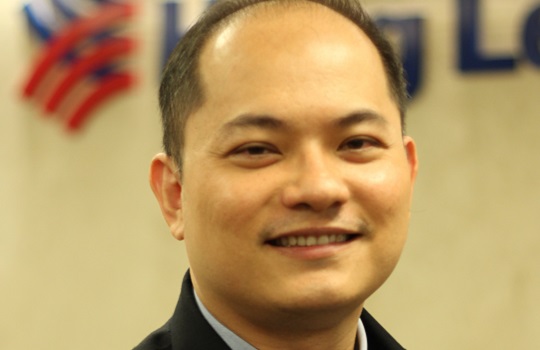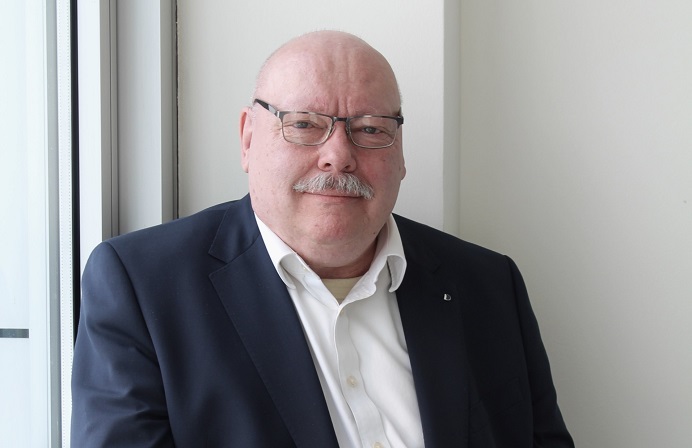
Hong Leong Bank’s Chief Information Officer speaks to FST Media about how the Internet of Things will shape banking in the next five years.
FST Media: What are your key IT priorities in the next 12-18 months?
Kang: My biggest IT priorities will all be centred around virtualisation. Whilst I have implemented a traditional, physical-to-virtual initiative virtualising close to 600 physical Windows applications from end of life hardware to a virtual platform, I am also very big on other ‘lesser known virtualisations’ such as software defined networking and storage virtualisation.
We are moving to new business premises this year. This new flagship building’s network backbone will feature elements of software defined networking which excites me because the technology we are implementing will definitely simplify network administrators’ tasks.
FST Media: What technology or innovation will be the single biggest game changer for banking in the next five years?
Kang: I believe the Internet of Things (IoT) will find its way to be one of the top game changers in the next 5 years. Whilst IoT is hot in the domain of wearables and in other non-banking industries, I believe it is only a matter of time before a smart competitor decides to embed functionality into ATM cards, proximity cards or self service terminals that allow seamless interaction with customers.
FST Media: How do you see cloud adoption shaping up in financial services in 2020?
Kang: Cloud technologies are definitely maturing but the take up in financial services are limited due to regulatory concerns surrounding customer data being ‘out there in the cloud’. As it stands, banks predominantly focus on private clouds, with minimal forays into public clouds. Hong Leong Bank is no different. We have an award winning database as a service private cloud and are also doing a lot of work in other areas like Java and DB2 private clouds. However, our exposure to public clouds is limited to eLearning and recruiting services.
I foresee that, as we move closer and closer towards 2020, regulators will open up and we will start seeing more and more banks opening up to public clouds.
FST Media: How will you harness the potential of social media platforms to improve overall customer engagement?
Kang: We use social media as a means to get informal feedback from customers. Whilst this gives immediate feedback, the challenge is how do we get all these different social media feeds into one single consolidated place for us to perform analytics that then drives how we react to customers. The proper response towards social media is something that goes beyond simply IT; it even requires the entire bank to be aligned with a social strategy. We need to consider who should tweet back to a customer, who is authorised to make offers to the customer and so forth. Banks still struggle with this.
FST Media: What advice would you give to aspiring CIOs looking to take the next step?
Kang: I started my career as a consultant with Accenture. At that point in time, I was on top of the world, jet setting from one country and one project to another. Whilst it was fun, it gave me a false sense of security, thinking that I knew a lot. The fact of the matter is that until one manages ‘business as usual’ or ‘run the bank’ projects (which was not the focus of consulting projects that concentrated more on ‘change the bank’ activities) one does not have a balanced view of things.
A good CIO needs to balance between ‘run the bank’ and ‘change the bank’. Both experiences are important for a good CIO to be successful.
FST Media: Every leader has a legacy they wish to be remembered for, what is yours?
Kang: When I joined Hong Leong Bank, a bank known traditionally for not spending significantly on technology, I was worried what I was getting myself into. Would I be able to convince management of the importance of technology?
I must say that in two very short years, I have built a foundation for the bank around four key elements of technology:
• Virtualisation
• Private clouds
• Managing obsolescence
• Proactive monitoring
In virtualisation, I brought upon a steep adoption of virtualisation. In the Wintel space, we originally experienced a very low density of virtualisation (four to one) and I have pushed the bank towards a density of 20 to one with still further room for improvement. There is a very clear business case in virtualisation and management recognizes that fact.
In private clouds, we harness the power of virtualisation to offer shared service infrastructure that offers ‘more for less’. We ensure that different applications with different CPU consumption patterns are sharing similar infrastructure so that combined, the different applications all need total computing power that is less than the sum of their individual parts. That is what we have done with our award-winning database private cloud.
In managing obsolescence, I have institutionalised a process and a need to actively manage our infrastructure and applications and plan for a technology refresh regularly. In the past, the bank used to use technology ‘until it breaks’. This often gave rise to incidents where our systems broke down at odd occasions due to wear and tear. And when it breaks, due to the end of support, the bank struggled to recover from incidents. We are now managing this better and more actively.
Lastly, the bank never invested in proactive monitoring. For instance, simple alerts that tell us if a system has a log file that is 90 per cent full were never done and we now have a full blown monitoring capability that alerts us when thresholds are breached. This means we can fix the issue before it becomes a bigger issue. We have also tuned up our alerts so that we have built-in tsunami warning-like capabilities. For example, if we see latency building up, we know that it may give rise in timeouts or system failures in a certain application, so we can therefore act quickly when we see latency building up.





